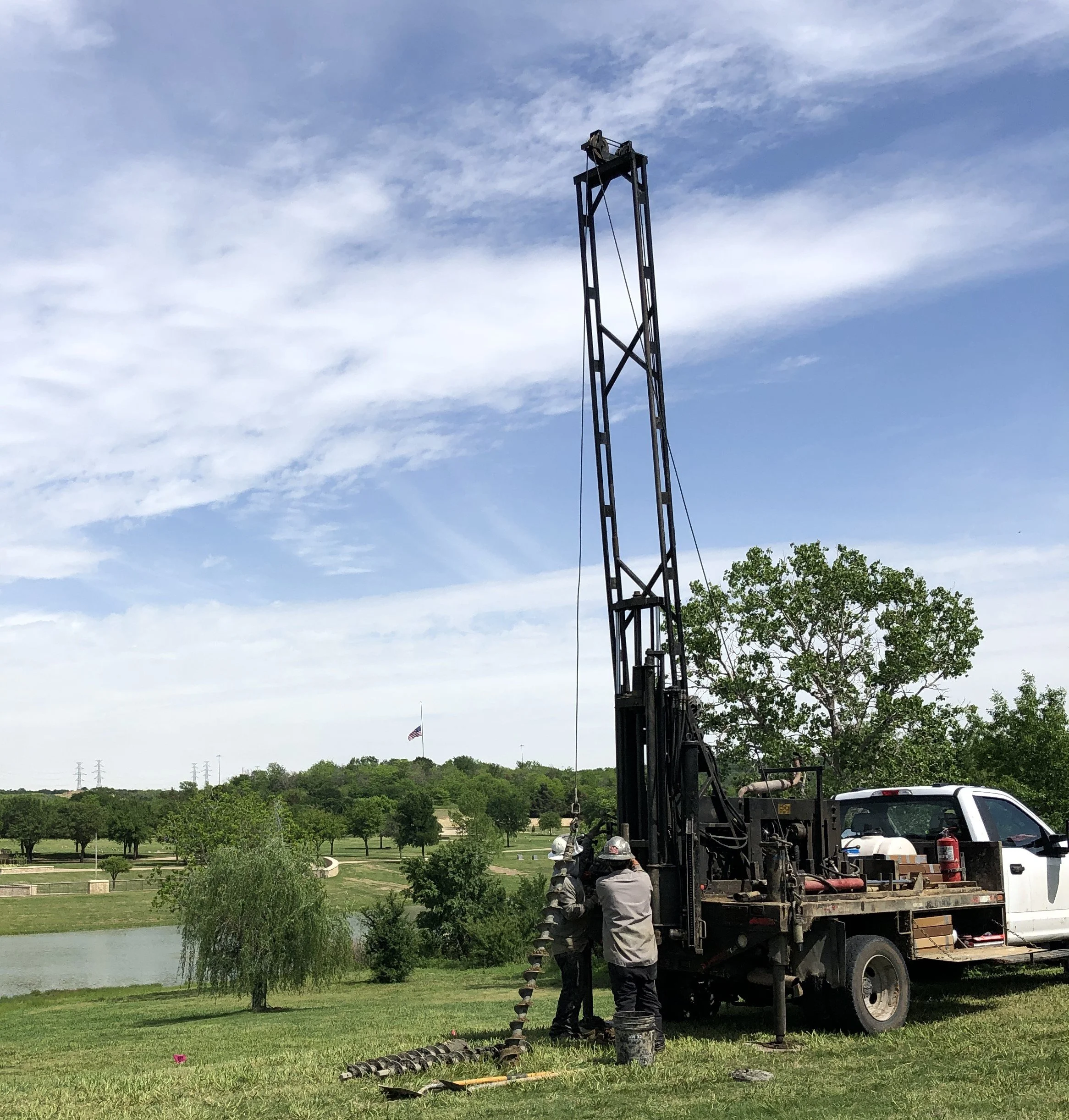
Department of Veterans Affairs Dallas-Fort Worth National Cemetery Lake Dredging and Irrigation Well Improvements
Client: Department of Veterans Affairs
Year: 2024
Location: Dallas/Fort Worth, Texas
Features:
Four drilled borings and five hand-auger borings to characterize subsurface conditions.
Soil sampling and logging performed under ASTM D-2488 protocols.
Laboratory testing of moisture/density, Atterberg limits, and percent fines.
Geotechnical design recommendations for earthwork, excavation support, dewatering, frost protection, and culvert design.
Laboratory testing, discussion, and recommendations for expansive soils.
Project Summary
Central Engineering Services is supporting Calibre Engineering and the Department of Veterans Affairs on an ongoing project at Dallas-Fort Worth National Cemetery in Texas. The purpose of our services in this phase was to evaluate subsurface soil and groundwater conditions at the Dallas-Fort Worth National Cemetery for the proposed lake dredging and irrigation well improvements. Central reviewed existing geologic and geotechnical information and coordinated field investigations that included four drilled borings and five hand-auger borings to depths of up to 26.5 feet around the existing lake feature. Laboratory testing informed a preliminary geotechnical report with design recommendations addressing earthwork, groundwater management, frost protection, excavation support, and culvert design.
Scope of Work
Central reviewed historical reports, geologic maps, and subsurface data to identify site conditions. The team coordinated and managed field investigations, arranged utility notifications, and performed borings on an active cemetery with minimal surface disturbance. Soil samples were obtained at representative intervals in accordance with ASTM D-2488 and logged for groundwater observations. Laboratory tests—including moisture/density, Atterberg limits, and percent fines—were performed to characterize soil behavior. A geotechnical report summarized the site topography, subsurface conditions, groundwater depth estimates, and design recommendations for site preparation, excavation protection, structural fill, frost mitigation, and culvert parameters.
Features:
Four drilled borings and five hand-auger borings to characterize subsurface conditions.
Soil sampling and logging performed under ASTM D-2488 protocols.
Laboratory testing of moisture/density, Atterberg limits, and percent fines.
Geotechnical design recommendations for earthwork, excavation support, dewatering, frost protection, and culvert design.
Laboratory testing, discussion, and recommendations for expansive soils.
Results:
The preliminary geotechnical report concluded that the site is suitable for the proposed cemetery development as proposed, provided the CES geotechnical recommendations are implemented. Construction is currently planned to begin in the late summer to early fall of 2025.



